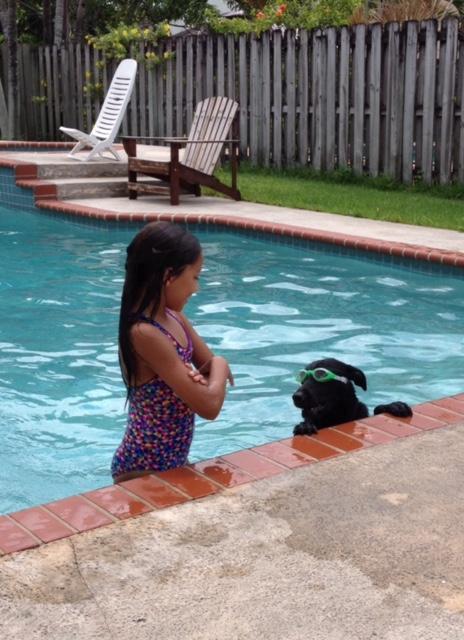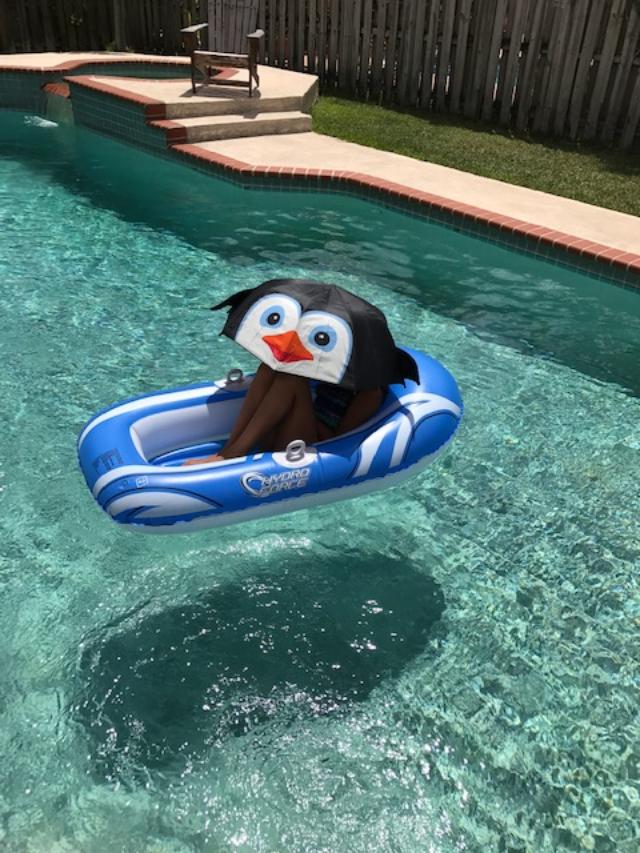
Sign up for classes. Pay the experts. What are the results? What are the guarantees? Parents have yet more burden placed on them when their children aren’t swimming independently.
The American Academy of Pediatrics (AAP) suggests that children should be in swim lessons until they have achieved at least basic water competency. This means they can get in and out of the water without assistance, “to tread water or hold resting float with the ability to transition into forward movement, to be able to swim 25 yards independently while taking breaths as needed, to have the emotional level to adapt to different water situations, to have the understanding of important water safety rules such as kids always swim with adult supervision, never swim alone and wear life jackets in and around open water” according to the USSSA. (See link below.)
Sound reasonable? Maybe and maybe not. Where do you live? Do you have access to classes? Can you afford them. If you live near Palm Beach Gardens, Florida there is a scholarship program at https://livelikejake.com/scholarship/ but that might not be where you are. Besides are you capable of being the one who teaches your child? That’s how it works in other parts of the world especially places like the Amazon or Pacific Islands.
Western modern culture in industrialized countries like the United States has dethroned parents of their natural role to teach and raise their children. This post industrial high tech culture questions parents and replaces them with “certified” or professional teachers to take their place. Certifications might be something to achieve, but they really don’t guarantee anything. If anything they can create a false sense of superiority in addition to increasing fees. Also certifications often fail to acknowledge experience, talent, and most importantly the character of the individual.
Classes can be great. They have a time and place, but sometimes parents are the best teachers to their own children. Yet, too many moms and dads relegate this natural gift to pay for the local classes that all the other parents are doing. They have been convinced that they are not good enough and that their children need to be around peers to advance. It’s what made schools and peers all the rage since World War II. But what often ensues is peer pressure, bullying, and disrespect of parents.
According to Neufeld and Mate in Hold on to Your Kids when children turn to their peers instead of their parents for identity the results dull the integrative mind, jeopardizes adaptive trial and error learning, attaches them to the wrong mentors, stunts their ability to articulate, makes studies irrelevant, makes them more susceptible to bullying, and impedes their ability to mature. Dropping your child off for peer based classes may not be producing the long-term results your really looking for.
Swimming offers a wonderful fun and relaxing time to bond with your toddler. Don’t farm this out to a stranger if you have access to a pool and the ability to swim well. If you need look for a class for parents and children, an instructor that will give you tips on how you might be able to lead your youngster, or pick up a book at the library. Recommended reading is offered below.
Another cultural trend in the West when it comes to swimming is the false need for more stuff. Parents show up with water wing, floats, rafts, and toys. But upon closer evaluation do all these swimming aid help or hinder your child’s ability to swim?
Type in a search about lifeguards and water wings. You’ll quickly find why we hate them and never put them on our own children. The last rescue I made was at my community pool when a parent who was busily talking allowed his toddler to drift too far away, the wing popped and down the child went. I swam to the child faster than the certified lifeguard on duty. I had heard about the potential of water wings deflating 25 years ago when my lifesaving instructor trained me. Ironically, years after those certifications lapsed is when I actually used the training and saved a child’s life.
The other reasons why water wings are counterproductive is they give a false sense of security while impeding proper body position and arm motion for swimming. Think about my story above. The father was overly confident that his son was fine. Now, I’m sure there are kids out there who were raised with water wings that did go onto learn how to swim, but why make the process harder and more unsafe?
In regards to all the floats, they pop easily, they obstruct viewing, and children can get caught underneath and panic. This is why many community pools outlaw them.

Sure they are fun, but evaluate what the product is, teach your kids so that if they do get caught under it they stay calm, swim out from under, and then come up for air. Teach them not to panic if it deflates. Most importantly, always keep an eye out. Put the phone down. Focus on your child even when they are good swimmers. Drowning does not discriminate. It happens to people of all ages, swimming abilities, and various situations. It only takes a few seconds for inhaled water to lead to damaging and possibly deadly results.

Lastly, every child is different. Don’t place unrealistic expectations on your youngster when they will be able to swim independently. There is no exact formula of how many lessons it takes, what age, or how long. Personality and perception of experience play a role as well. If the child shows displeasure at getting water in their face or during their first immersion experience respect it, validate, comfort immediately with a warm hug then try again later when they show signs that they are ready.
Keep in mind that the more frequently the child is given the opportunity to learn, practice, or play in the pool that will increase the learning. 30 minutes 3-5X/week is going to produce better results than once a week. A week long class while on vacation may do better than 5 lessons over 5 weeks. My advice is start as soon as you are able. Whether it is the bathtub when your baby is 4 weeks old*, in your backyard pool in sunny Florida, or local community pool, don’t wait until they are ready for school. Bond now through the wonderful joy of swimming.
**Beware of cute photos: The adorable dog photos above did come at a cost. She loved swimming so much that it was next to impossible for us to enjoy swimming anymore. She always had to jump in and swim to whoever was in the pool. Those claws didn’t feel good. Dog hair also clogs the filter. We kept the dog, but sold the house. No more pool in the backyard. Thank God my daughter knew how to swim well before we adopted this wonderful black lab rescue.
https://neufeldinstitute.org/resources/hold-on-to-your-kids-book/
https://www.usswimschools.org/about/core-values-purpose/usssa-basic-swimming-definition/
https://www.barnesandnoble.com/w/how-to-teach-your-baby-to-swim-douglas-doman/1113942887
*Water Babies: Safe Starts in Swimming by Francoise Barbira Freedman
Learn to Swim: Step by step water confidence and safety skills for babies and young children by Rob &Kathy McKay
Teaching Swimming and Water Safety: Learning Aquatics the Australian Way. The Australian Council for the Teaching of Swimming and water Safety
#Swimminglessons #Parenting #Waterwings